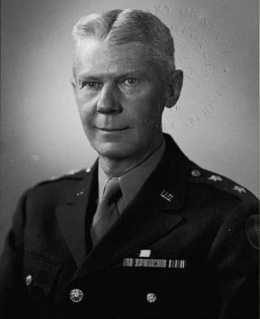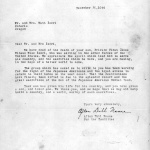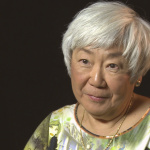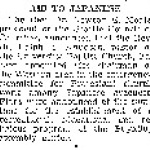Charles H. Bonesteel
| Name | Charles H. Bonesteel |
|---|---|
| Born | April 9 1885 |
| Died | May 5 1964 |
| Birth Location | Ft. Sidney, Nebraska |
Successor to Delos Emmons as the head of the Western Defense Command (WDC), Charles H. Bonesteel supported the end of the exclusion of Japanese Americans from the West Coast.
Bonesteel was born at Ft. Sidney, Nebraska, on April 9, 1885, into a military family—his father was Maj. Charles H. Bonesteel and his grandfather was Gen. O.D. Greene, who served in the Civil War. Bonesteel entered the United States Military Academy at West Point in 1904 and after his graduation in 1908 he joined the 12th infantry at Ft. Porter, Buffalo, New York. He then served at various stations along the Mexican border and in the Philippines and in 1915 first came to Hawai'i. Bonesteel became a captain within a month after entry of the United States into World War I and was then promoted to the rank of major in the aviation section of the signal corps. In August 1918, he went to France where he commanded a battalion of the 55th infantry, 7th division.
Upon his return from France, Bonesteel was ordered to Newport News, Virginia, where he commanded a debarkation camp and later became a commanding officer of the debarkation camps at Camp Morrison, Virginia. In 1919, he returned to West Point where he served as a member of the tactical department for five years. Bonesteel then attended the infantry school at Ft. Benning, Georgia, and the general staff school at Ft. Leavenworth, Kansas, that was followed by a four year detail in the training section of the office of the chief of infantry in Washington. In 1932, Bonesteel was promoted to lieutenant colonel and he spent the next four years as an instructor at the infantry school. He was made a full colonel in 1937 while commanding the 1st battalion, 2nd infantry, at Ft. Sheridan, Illinois.
In May 1938, Bonesteel arrived in Hawai'i and was the commander of the 19th infantry. In 1944, Bonesteel replaced Delos Emmons as head of the Western Defense Command and like Emmons supported the end of the exclusion of Japanese Americans from the West Coast. In a letter to the assistant secretary of war, Bonesteel noted: "My study of the existing situation leads me to a belief that the great improvement in the military situation on the West Coast indicates that there is no longer a military necessity for the mass exclusion of the Japanese from the West Coast as a whole." [1] Although Bonesteel believed that certain individuals should be excluded, he felt that mass exclusion was unnecessary. Throughout 1944, Bonesteel continued to push for "positive action" on the question of ending the mass exclusion of Japanese. [2] Despite his urgings, the Roosevelt administration delayed ending exclusion until after the president's reelection on November 10, 1944. Finally, on January 2, 1945, the rescission of mass exclusion and the commencement of the broad program of individual exclusion took effect.
Bonesteel passed away in 1964 and was survived by his wife, Caroline Hudson Bonesteel and his son, Charles H. Bonesteel III.
For More Information
"Bonesteel, Charles H.- (Lt. Gen.)." Microfiches Biographical D98050. University of Hawai'i at Mānoa Hamilton Library.
Commission on Wartime Relocation and Internment of Civilians. Personal Justice Denied: Report of the Commission on Wartime Relocation and Internment of Civilians . Washington, DC: Government Printing Office, 1982. Foreword by Tetsuden Kashima. Seattle: University of Washington Press, 1997.
Muller, Eric L. American Inquisition: The Hunt for Japanese American Disloyalty in World War II . Chapel Hill: University of North Carolina Press, 2007.
Last updated June 15, 2020, 7:01 p.m..

 Media
Media







